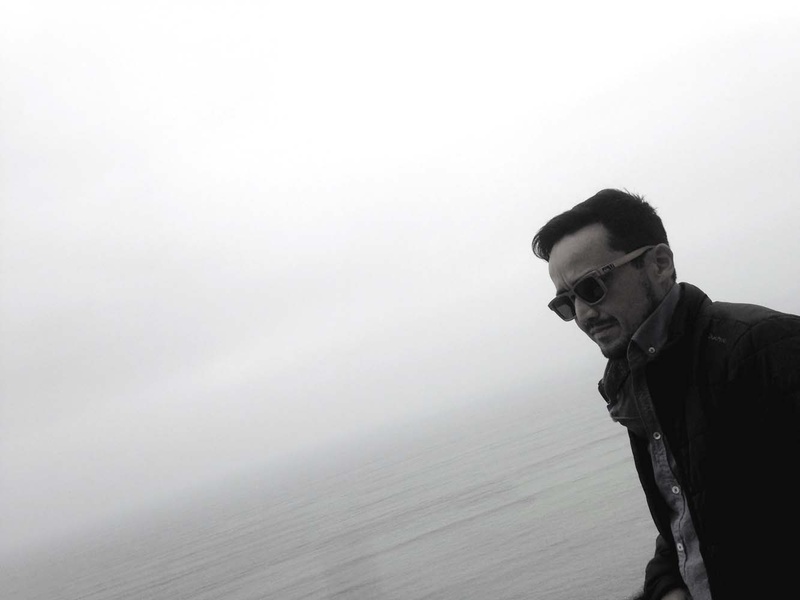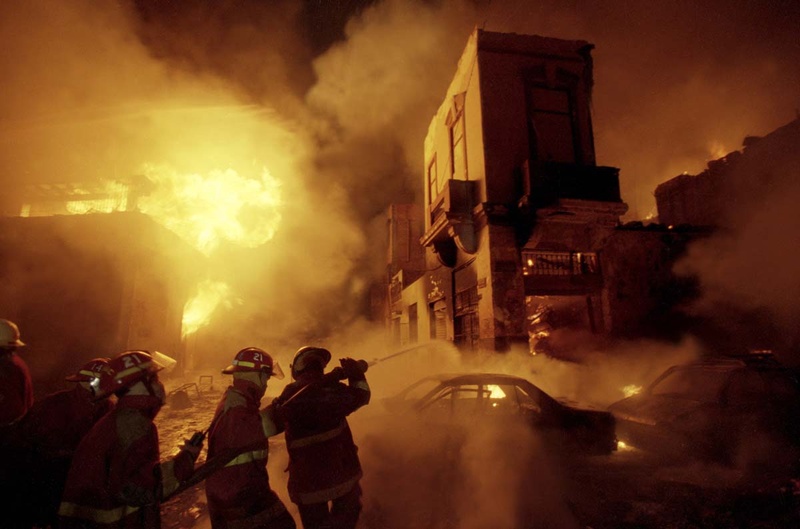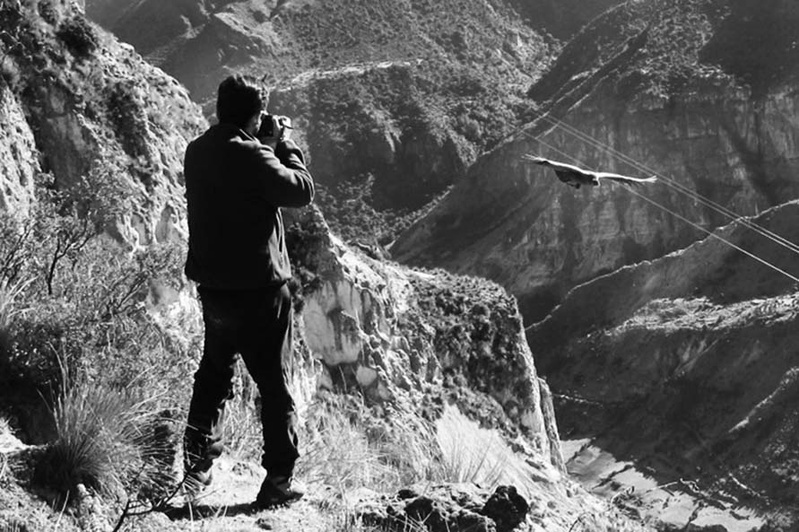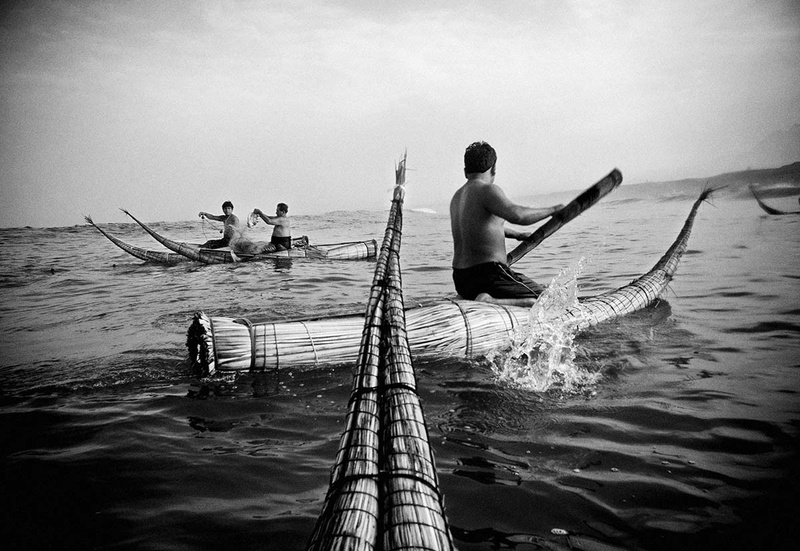Daniel walks through Miraflores with his eyes protected by dark moons. It's winter in Lima and his gaze doesn't appear until we enter a cafeteria where he orders a chai tea. If they had to write a definition of him under his name on the disposable cup, it would say videographer instead of photographer, the profession that has earned him various awards and publications in the media in America and Europe.
Daniel Silva Yoshisato (Lima, 1975) has found another identity in the moving image since he began making commissioned videos and personal projects for which he did not expect to receive remuneration. Now that specialty already helps him pay the bills and is opening a new perspective in his work as a creator.
Discovering another way of telling the facts in addition to the news has given a twist to a career that has led him to travel through touristy and inhospitable places, to form his own company, to do film photography and to search for new languages behind the lens of a camera. “Everything builds a path for you,” he says while evoking his first episodes as a photojournalist.
look at the news
He says that he began practicing in the newspaper Perú Shimpo, which he called and offered himself as a collaborator because he was already in the last years of his degree in Communication Sciences at the University of San Martín de Porres and had no experience. There he won it at once. “At the newspaper, the editors were also photographers, so I did both.”
He spent six months before joining El Comercio, in 2000, where he grew up as a photojournalist and formed that view of reality that was able to witness events such as the terrible fire at the Mesa Redonda shopping center in 2001 (with which he won the National Prize for Photography Eugene Courret, the following year); or unusual realities like that of a Cusco village where peasant women play soccer in sandals.

This report earned him the Visa Pour L'Image 2004 award, from France, and the World Press Photo 2005 in the Sports category. Witnessing the contrasts that occur in Peru almost simultaneously (the beauty of the Peruvian jungle and the mining pollution that destroys it) added to the images that he has been accumulating in a portfolio exhibited alongside reports and chronicles about giant fish, successful Peruvian chefs and uncontacted natives.
The trained eye
Silva's photographs have been included in prestigious media and publications such as the France Presse and Reuters agencies; the newspapers Le Monde (France), Der Spiegel (Germany) and El País (Spain); and Time, Esquire, Black Label and National Geographic magazines, among many others. Training your eye has been an adventure that usually only appears with your credit at the bottom of each image.
Observing hidden and silent has been part of his strategy born from journalism, where the reporter tries to go unnoticed while the news happens. With that same spirit, Daniel now tries to capture his characters in films he makes following that school of patient witnessing and attentive to spontaneity.
His first videos were commissioned by Promperú, the tourism promotion agency that hired him to show the experience of Asian visitors in Lima and Cusco. The short film has the charm of a trip shared between friends and the photographic treatment of someone who takes care of both the story and the quality of each image. His following videos show the direction he is taking with the practice.
A personal look
“If I waited for someone to call me I wouldn't have done anything,” says Daniel, who before showing me his audiovisual side on a laptop, tells me that he spent two years living in Trujillo, where he photographed fishermen who use reed horses to fishing on Huanchaco beach, like the ancient Peruvians did. “It was like being in front of a living museum.”
He was so captivated by these artisanal boats that he began to record them to tell their lives, as full of tradition as they are of tragedy. “They are people affected by pollution that leaves fewer and fewer resources in the sea,” says Daniel. This is how “ The Last Lord of the Ocean ” (2015) 1 was born, his first personal short film, a project that he started alone and was joined by two friends for music and editing.
The story of this fisherman descendant of the Mochicas was shown at the Lima Film Festival and Daniel Silva's photography won the Picture of the Year (POY) Latin America award, in the Everyday Life category. “It was a sign that I was doing something good,” he says as he lends me his headphones to give me a preview of his latest work.

From cotton to the clouds
From the second video that he did for Promperú about the cotton chain and the Peruvian textile industry, where he shows the entire process of this activity, to “París Lumière” there are barely two years in which Silva Yoshisato (as he signs his second personal work) has challenged his own form of telling stories. The first is a very moving combination of film journalism and advertising.
The second is a risky way to see again what many have seen: Paris. “How to show a different and timeless angle of one of the perhaps most photographed cities in the world?” asks the videographer. In recent years, Daniel traveled to France several times and decided to tell his daily life, inspired by painting and the lines of charcoal drawings.
“ Paris Lumière ” is a photographic and audiovisual essay that is not yet finished and that has led him to develop a technique (of overexposed images, so illuminated that they seem taken between the clouds) that hints at the city and its inhabitants. “I would like it to be exhibited there,” he confesses, telling me that another of the projects he always has in mind is to visit Japan, the country of his ancestors.
A dream, a price
Daniel is just over 40 years old but he still seems like a young man full of dreams who looks at the sky searching for the stars. Nothing is further from reality. When in 2012 he founded the Cometa publishing house with the chronicler Marco Avilés, he discovered that forming your own company does not bring you closer to the clouds, as the success stories of entrepreneurs paint it, even if you name it after a toy that flies.
Planning, getting clients and developing a value proposition (which is combining photojournalism techniques to have content that communicates a brand) were the most terrestrial terms he had to deal with. “When I was a photographer at El Comercio there were people who were in charge of all the administrative issues. When I started working as a freelancer and with Cometa I realized the responsibilities that had to be assumed.”
Cometa was a project that allowed him to work with Wayra Perú, a startup accelerator, thanks to which they developed various content (including videos) and which showed him the tools with which he now faces any job. A project, explains Daniel, has to be between what you want to do and what the client is looking for, offering a proposal that is interesting and profitable.
Daniel receives a phone call. His dream of working doing what he loves keeps him young and busy. In sneakers but with the laptop in tow. Doing work with various brands in photography and audiovisuals, for clients and other projects (including film). Each one in the image and likeness of his identity as a photojournalist and creator.
Grades:
1. https://vimeo.com/125991906 (English).
© 2016 Javier Garcia Wong-Kit










